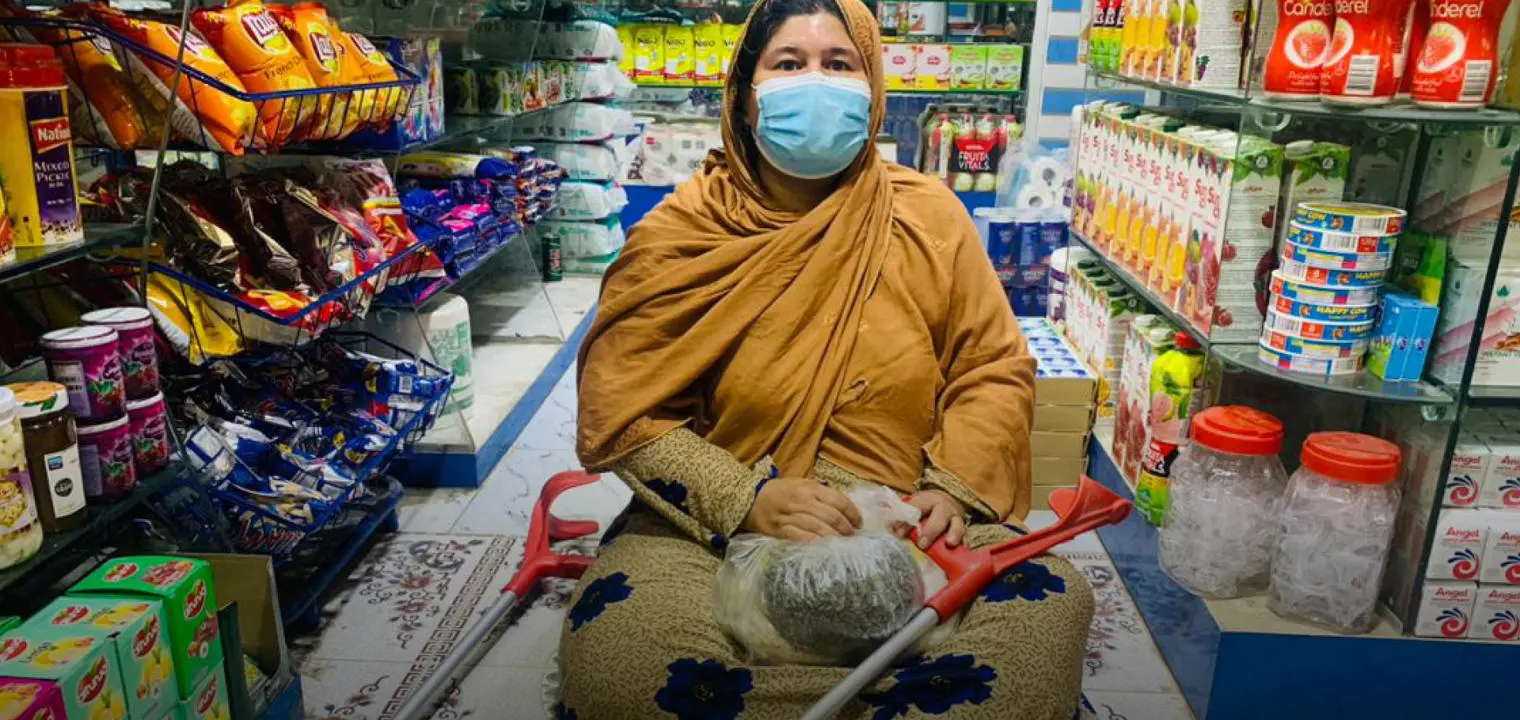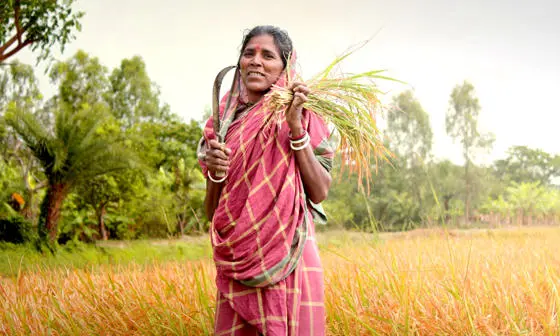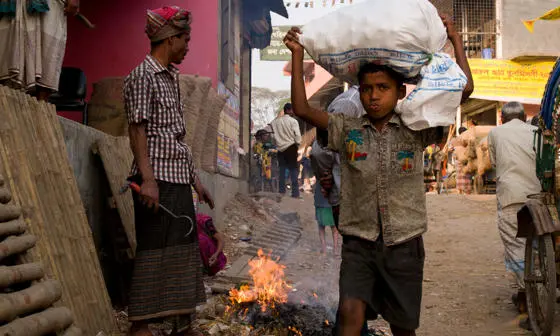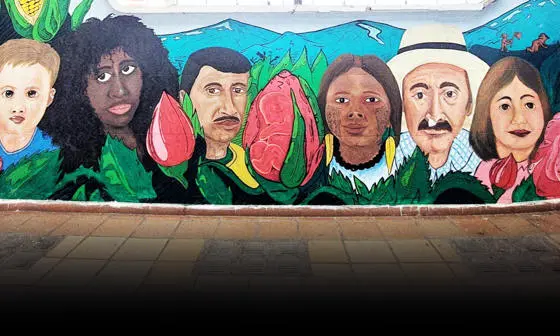Paying humanitarian aid digitally can help society’s most vulnerable: a study with Afghan women

Contents
The challenge of ensuring that humanitarian aid reaches those who need it the most in conflict-ridden countries is huge. Poor infrastructure, corruption, the restriction of certain groups’ rights by an authoritarian government – all are obstacles to the successful delivery of aid. And with a shocking 97 per cent of Afghans feared to be at risk of falling beneath the poverty line, it is now more vital than ever for aid agencies to identify robust methods of directing support to those most in need.
Research by Dr Michael Callen, Associate Professor of Economics at LSE, suggests that digital payments could provide a solution to at least some of the issues facing agencies tasked with distributing humanitarian aid. His recent project, which trialled transferring digital money to Afghan women via a mobile app, finds that mobile money can ensure that cost-effective, impactful and timely assistance is provided directly to those most in need.
"Afghanistan is just not a place that conduces naturally to having a banking system, but most people these days do have a mobile phone, even in countries that have experienced decades of conflict," he says. "Although it will vary, the infrastructure also tends generally to be pretty robust, so there’s been interest in using digital payments to pay salaries for many years."
What is novel about this project is that we’re doing it in a place where the government places extreme restrictions in the group we're working with.
"Afghanistan is just not a place that conduces naturally to having a banking system, but most people these days do have a mobile phone, even in countries that have experienced decades of conflict," he says. "Although it will vary, the infrastructure also tends generally to be pretty robust, so there’s been interest in using digital payments to pay salaries for many years."
To test the viability of paying humanitarian aid using this method, Dr Callen and colleagues secured funding to transfer 4,000 AFA – approximately 45USD – to each participant, every two weeks for two months. In total, 2,409 women living in 16 different nahias (neighbourhoods) in Kabul, Heart and Mazar-I-Sharif took part, with monthly phone surveys completed to measure the programme’s impacts. The funds were transferred via an app (HesabPay) – with vendors using QR codes that the women would scan to exchange their digital vouchers for food. There was no option for them to cash-out the digital funds, making the process completely cashless.
"What is novel about this project is that we’re doing it in a place where the government places extreme restrictions in the group we're working with," explains Dr Callen. "We wanted to see what immediate impact payments like this could have on this most vulnerable group in terms of access to food and humanitarian needs, and also whether payments would be informally taxed by local authorities. What we found is that digital payments are a great way of providing immediate help to those most vulnerable at a moment of crisis."
"It’ll never catch on" - why aren’t digital payments used widely already?
Transferring money through an app is no longer a novel concept, so one could wonder why the use of digital payments for aid has not been taken up more universally before now - especially as the ability to transfer money directly to the person in need via secure technology seems ideally suited to helping those living in precarious conditions. Charities, like GiveDirectly, have transferred money directly to beneficiaries using mobile money for well over a decade.
"Digital transfers are very helpful, especially for people who don’t have bank accounts or other means of transferring money," Dr Callen agrees. "The fact that this is an entirely cashless transaction also works really well in terms of delivering humanitarian aid, because no one has to collect and distribute the money, something that can be especially costly, challenging, and dangerous in rural areas where it's hard to get that much money together at one time."
To understand why mobile technology hasn’t been embraced by the aid community to date, the team surveyed 91 academics and practitioners, asking them to predict the most likely outcomes of their trial.
The two most commonly predicted outcomes were that the women might not be able to use the technology well enough to adequately access the digital funds, and that authorities would choose to divert the funds through deciding to tax digital aid payments. Both were valid concerns, but also worries that offer an explanation as to why mobile technology has not been used to distribute aid previously. "Such beliefs, even if weakly held, can support a risk averse approach to adopting new approaches to humanitarian response," says Dr Callen.
Perhaps 70 per cent of the women we sent money to had no primary schooling and many were illiterate...To have 98 per cent of the people be able to use it without any trouble was really remarkable to us.
An app easy enough for even the digitally illiterate to use
Neither of these fears, however, were borne out in reality. The project's results were hugely positive, with over 98 per cent of the money transferred digitally being spent as local purchases in the first eight weeks after launch. Furthermore, the women surveyed reported skipping fewer meals and eating a more nutritionally diverse diet both while receiving the payments and for several weeks afterward. This, Dr Callen concludes, shows that it is possible to deliver aid completely digitally, without requiring people to cash out.
Although Dr Callen had initially shared the worry that the women involved would struggle to access the funds, he reports the training they received was a huge success. This indicates that a lack of formal schooling - something many of the world’s poorest have in common – should be no barrier to receiving payment this way.
"Perhaps 70 per cent of the women we sent money to had no primary schooling and many were illiterate, so we expected some degree of tech illiteracy as well," he says. "We really weren’t sure how easy they would find it to adapt to the app, and we spent a lot of time piloting it, but the results were fantastic. To have 98 per cent of the people be able to use it without any trouble was really remarkable to us."
On the scale we were operating on, it’s just not a political winner to go to the poorest people in the community and say we want your money.
A more transparent way of giving humanitarian aid
Fears that local authorities might seek to financially benefit by imposing taxes on the payments also did not materialise. This, Dr Callen suggests, could be because digital payments are easily tracked. He explains: "One of the great things about this approach is that there is transparency around what is being provided. There’s a clear record, from the moment the money is released to the moment it's spent. Cash or in-kind assistance is much harder to audit because it doesn't leave this automatic electronic record where it's been.
"In addition, you make it clear to beneficiaries what they’re entitled to before they start receiving anything, and that is the amount that goes direct to their app account. If you’re bringing in food or cash there’s a transition, borders to go through, it’s not always clear what belongs to who during the course of its journey and it’s just generally easier to intercept.
"With these payments, however, if authorities want to skim some of that money, they have to go directly to the beneficiary and take it from them as a tax. And, certainly on the scale we were operating on, it’s just not a political winner to go to the poorest people in the community and say we want your money. Importantly, I want to emphasise that our experiment does not allow us to rigorously compare the direct digital approach with other methods, and there certainly is no one-size fits all solution, but our evidence does indicate that the all-digital approach is viable and effective."
Restricting the cash-out option and requiring the women to pay for items using the app also reduced the potential that they could be physically coerced into giving up the funds, or using them in a way they did not wish to. Over 90 per cent of those involved in the trial reported that they alone made the decision over how to spend the money, says Dr Callen, indicating that digital payments could also be a way to give, at least some, autonomy to marginalised groups like the Afghan women involved here.
Digital aid payments are not a panacea
While the project produced positive findings, Dr Callen cautions that mobile money is not a silver-bullet to the issues of delivering effective humanitarian aid. While no authorities chose to tax the participants in this programme, he points out this is no guarantee they would not seek to profit should such payments become more popular.
"It is possible they could apply a tax on the merchants instead of the beneficiaries," he says. "We checked for that as carefully as we could and didn’t see any evidence of this happening, but certainly that’s an area that could be exploited if there were enough money involved. Another potential issue is that governments could just shut down the app altogether, or tax the app directly and not allow them to channel financial payments."
Then there is the need to ensure that enough merchants will accept the digital vouchers as payment to make it viable, and that the training that enabled the women to use the app is sustainable and safe - something increasingly difficult to predict as the Taliban continue to impose strict restrictions on the movements and freedoms of women and girls.
"We found that the best way to train the women to use the digital voucher was to do it in a group setting, so this would usually involve bringing 50 or so women together at a community centre," says Dr Callen. "But this is something that draws a lot of attention. We didn't encounter any problems, but you definitely had to let the local authorities know that this was going to be happening.
"So there are challenges. Afghanistan is probably the most challenging place to work with women in the world right now, and it would take some thinking and innovations beyond what we’ve done so far, but there are models of doing this where you could enrol somebody without them having to come to a centralised location or even leave home."
A quick and easy rollout might not be viable, but with the programme showing that there are clear gains to be made from using direct mobile payments, Dr Callen hopes that greater use can be made of the opportunities digital technologies provide.
"This needs a certain ecosystem to work," he concludes. "There are undoubtedly still many areas around the world where traditional aid methods would be more appropriate. But I think there's a large chunk of territory where something like this could work. Given that it’s cost effective and seems to provide at least some additional resilience against corruption that more traditional approaches don't have, I think it does make sense to use this method where we can."
Dr Michael Callen was speaking to Jess Winterstein, Deputy Head of Media Relations at LSE.
Image: Michael Callen
Download a PDF version of this article




